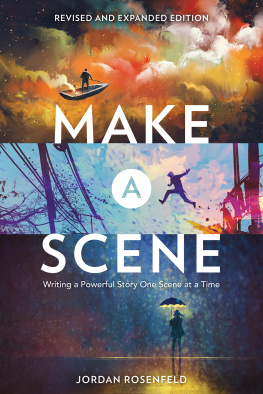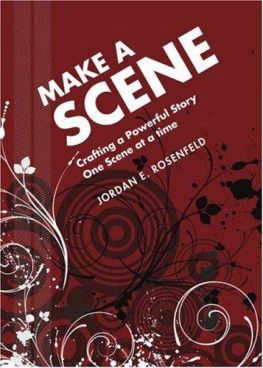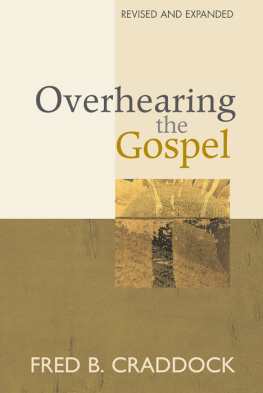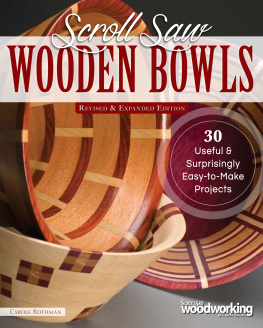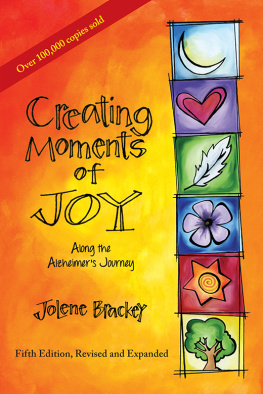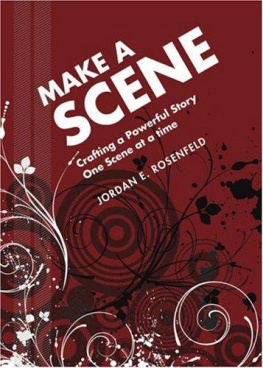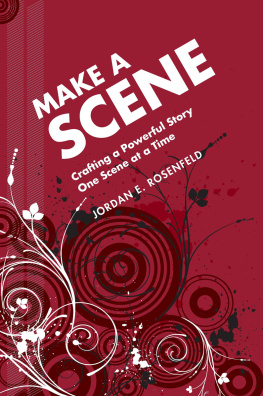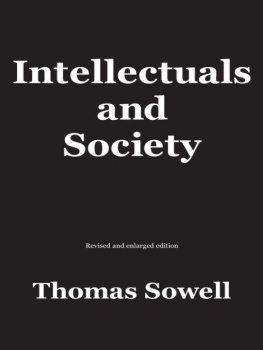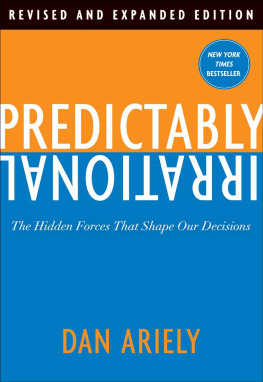Jordan Rosenfeld - Make a Scene Revised and Expanded Edition
Here you can read online Jordan Rosenfeld - Make a Scene Revised and Expanded Edition full text of the book (entire story) in english for free. Download pdf and epub, get meaning, cover and reviews about this ebook. publisher: Penguin Publishing Group, genre: Romance novel. Description of the work, (preface) as well as reviews are available. Best literature library LitArk.com created for fans of good reading and offers a wide selection of genres:
Romance novel
Science fiction
Adventure
Detective
Science
History
Home and family
Prose
Art
Politics
Computer
Non-fiction
Religion
Business
Children
Humor
Choose a favorite category and find really read worthwhile books. Enjoy immersion in the world of imagination, feel the emotions of the characters or learn something new for yourself, make an fascinating discovery.
- Book:Make a Scene Revised and Expanded Edition
- Author:
- Publisher:Penguin Publishing Group
- Genre:
- Rating:4 / 5
- Favourites:Add to favourites
- Your mark:
- 80
- 1
- 2
- 3
- 4
- 5
Make a Scene Revised and Expanded Edition: summary, description and annotation
We offer to read an annotation, description, summary or preface (depends on what the author of the book "Make a Scene Revised and Expanded Edition" wrote himself). If you haven't found the necessary information about the book — write in the comments, we will try to find it.
Make a Scene Revised and Expanded Edition — read online for free the complete book (whole text) full work
Below is the text of the book, divided by pages. System saving the place of the last page read, allows you to conveniently read the book "Make a Scene Revised and Expanded Edition" online for free, without having to search again every time where you left off. Put a bookmark, and you can go to the page where you finished reading at any time.
Font size:
Interval:
Bookmark:

A
SCENE

WritersDigest.com
Cincinnati, Ohio
This second edition is dedicated to all the writers who toil in near obscurity, wondering if anyone ever reads their words. Your words matter!
TABLE OF CONTENTS
2017
A bit more than ten short years ago (they went by fast!), I joined a friend on a self-made writing retreat in Mendocino, California, in the middle of winter. Rain doused our log cabins all weekend and steam rose from the moss-covered roofs, providing the perfect ambience, and motivation, to keep writing. We kept warm by making our own fires in the wood-burning stove while sharing writerly shoptalk on our breaks, and I wrote the proposal for the first edition of Make a Scene by hand, with pen and paper. This was before all the technology we now take for granted, and I didnt even own a laptop. Back then, my cell phone was twice as big as my wallet and definitely not smart, there were no iPads or electric cars, and we didnt even have social media yet (unless you count Myspace)! No Twitter or Facebookand we sure as heck couldnt have imagined Snapchat. When I sent the good news to friends about selling Make a Scene to Writers Digest Books, I did it by e-mail, inputting one persons name at a time.
A lot has changed since that day, but very little when it comes to good writing. Ten years later, I can still say with confidence that learning how to write strong scenes remains the single most important element of the craft that you can learn. If anything, Id argue its even more relevant to fiction in the modern publishing marketplace, where books now compete with streaming video clips, immediate access to movies in your pocket, high-quality TV, and an addiction to instant gratification.
Ive had the good fortune to watch my editing clients pursue publication of their books, and those who can craft compelling scenes have seen the most success. To my new readers, I hope you will join the many others who have found the magic of scenes and learn to employ them in your own work. To all of my dedicated readers over the years who have contacted me to say that this book made them a better writer, I thank you. Lets keep making a scene.
Just as you are not a singular thing, but a sum of blood and flesh and organs and neurons working together, a scene contains all the elements of great fiction. Many writers understand that they must show, not tell, but dont necessarily understand that this requires all the elements of fiction to work together, to inform each other, in order to create a narrative that is compelling and capable of maintaining a readers attention.
I feel confident when I say that if you can understand what a scene is, how all its elements collaborate to create a vivid and compelling piece in the larger puzzle of your story, and how those moments add up to a satisfying sense of completion, youll write your drafts differently and become a more self-assured writer with a page-turner on your hands.
To make scene construction clear, start with the basic function and structure of a scene. Even if you can identify a scene in someone elses work, you may not be able to do so when it comes to your own writing (I have worked with plenty of writers who struggled with this). Where does a scene stop and start? Can too much or not enough of one element ruin the whole story? I want you to know why you should bother to write scenes and how a single scene is built before you try to build a house out of them.
The bulk of this book explores different kinds of scenes that compose a narrative, from suspense scenes to contemplative scenes. The different types of scenes are like notes in a symphony: Individually they may be intense or mild, contemplative or dramatic, but when used in combination with other scenes, they form a fantastic narrative that feels rich and complex.
By the books end, you should be able to build vivid scenes and link them together in a way that creates a compelling narrative that engages the reader and makes you proud.
Throughout this book Ive included sidebars in which published authors share their insights on all aspects and techniques of scene writing. These exclusive thoughts prove that even best-selling authors can be inspired and moved by a well-written scene.
To help you avoid tactics that could bore the reader, I leave you with this caveat: The audience is watching. The first draft is your one shot to tell yourself the story without anyone breathing down your neck. After that, you must write (and especially revise) as if the reader is sitting behind your desk, awaiting your finished pages. What this means is that it is your job to entertain and inform the reader through clear writing and powerful scenes; if you are using fancy prose or showy strategies to amuse yourself or prove something to yourself, you arent keeping your audience in mind.
Though its not wise to write first drafts with the superego breathing its foul, critical breath down your neck, your readers should be the most precious people imaginable (second in line only to your characters). You see, most readers are not writers; they dont know how hard it is to write. They have very little patience or empathy for your struggles. They just want a good story, and they will abandon one that doesnt hold their interest in a heartbeat. Its up to you to ensure that they dont lose interest in your story.
ARCHITECTURE OF A SCENE
You climb a long ladder until you can see over the roof, or over the clouds. You are writing a book. You watch your shod feet step on each round rung, one at a time; you do not hurry and do not rest. Your feet feel the steep ladders balance you climb steadily, doing your job in the dark.
ANNIE DILLARD
FUNCTIONS OF A SCENE
Youve felt the pulse-pounding drama of a good story, caught up in a book so real you felt as though it were happening to you and turning pages at a furious clip. What makes that story, book, or essay come to life? Strong, powerful scenes.
Writing is a wildly creative act, and therefore writers often wish to defy rules and formulas. Just when a rule is agreed upon, it seems, some writer comes along to break it. The good news is that, while there is a formula to scene writing, its not straightforward. Its not like a paint-by-numbers kit, where you fill in the listed colors and voil, you have a perfect painting of dogs playing poker, in all the right proportions. The scene-writing formula is more like the creative spontaneity of cooking: You start with the ingredients the recipe calls for; you work within the guidelines, using pans, heat, and time; but variations on the main ingredients yield different, even surprising, results.
The only certain result you want is to snare readers attention with your very first sentence and never let them go. Since writing competes with the fast-paced, seductive intensity of online streaming and social media, your challenge is to write scenes with the power to rivet readers right where they read.
So what is a scene, exactly? Scenes are the essential DNA of story: They are the individual cells of information that shape the essence of the story in which sympathetic characters undertake significant actions in a vivid and memorable way on the journey toward a compelling plot goal. When strung together, individual scenes add up to build fully developed plots and storylines.
Font size:
Interval:
Bookmark:
Similar books «Make a Scene Revised and Expanded Edition»
Look at similar books to Make a Scene Revised and Expanded Edition. We have selected literature similar in name and meaning in the hope of providing readers with more options to find new, interesting, not yet read works.
Discussion, reviews of the book Make a Scene Revised and Expanded Edition and just readers' own opinions. Leave your comments, write what you think about the work, its meaning or the main characters. Specify what exactly you liked and what you didn't like, and why you think so.

